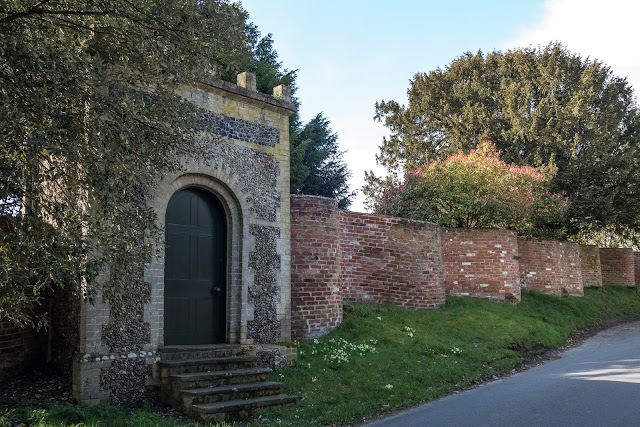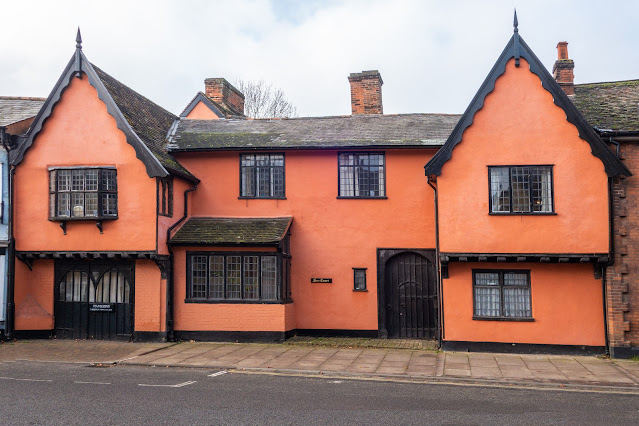Bramfield church with its detached tower
On wander in north Suffolk, we had intended to visit the thatched church at Bramfield.
However, on arriving, the first thing which grabbed our attention wasn`t the church. It was a crinkle crankle wall, also known as a crinkum crankum, serpentine, ribbon or wavy wall, is an unusual type of garden wall. The crinkle crankle wall economizes on bricks, despite its sinuous configuration, because it can be made just one brick thin, also known as a crinkum crankum, serpentine, ribbon or wavy wall. It is an unusual type of garden wall. The crinkle crankle wall economizes on bricks, despite its sinuous configuration, because it can be made just one brick thin.
The crinkle crankle wall
Opposite is the glorious thatched church of St.Andrew with its attractive lytchgate. St.Andrew's, together with St.Peter's at nearby Thorington, are both round tower churches of which there are less than fifty throughout Suffolk. The round tower at Bramfield is over thirteen metres high with a wall thickness of over a metre and houses five bells, three of which date from 1440. However, Bramfield St.Andrew is unique in Suffolk in that here the round tower is completely detached from the body of the church. Remarkably, it is thought that the tower has always stood alone as there is no evidence to the contrary.
Note the lovely thatched roof.
Another view, this time from the rear.
One of the first features which catches the attention, is the Rood Screen. The rood screen (also choir screen, chancel screen, or jube) is a common feature in late medieval church architecture. It is typically an ornate partition between the chancel and nave, of more or less open tracery constructed of wood, stone, or wrought iron. The rood screen would originally have been surmounted by a rood loft carrying the Great Rood, a sculptural representation of the Crucifixion. At Wells Cathedral the medieval arrangement was restored in the 20th century, with the medieval strainer arch supporting a rood, placed in front of the pulpitum and organ. Rood screens can be found in churches in many parts of Europe. However, in Catholic countries they were generally removed during the Counter-reformation, when the retention of any visual barrier between the laity and the high altar was widely seen as inconsistent with the decrees of the Council of Trent. Accordingly, rood screens now survive in much greater numbers in Anglican and Lutheran churches; with the greatest number of survivals complete with screen and rood figures in Scandinavia.
A close up of the detail, and below are two images from the paintings at the base.
The series of panel paintings originally comprised the Evangelists and four other saints, of which five remain. From left to right, they are: Saints Mark and Matthew, (both repainted). And BELOW, Saints Luke, John and Mary Magdalene. The Magdalen with her jar of ointment is richly dressed in a pale rose robe like a Flemish grand dame, and the paintings may well have come from the same hand as those at Yaxley and Sotherton.
The beautiful, but poignant, memorial to Mrs Arthur Coke who died in childbirth in 1627
The Lychgate - Lych is derived from the Old English 'lich', meaning corpse. They were meeting places and shelters for the party bringing a corpse for burial, and for the priest to receive the corpse. Although some had been built earlier, the 1549 Prayer Book required the priest to meet the corpse at the churchyard entrance. This encouraged the provision of lych-gates to shelter the corpse and the funeral party for that purpose.
Medieval lych-gates were made of timber and most have long since disappeared.
However, many new lych-gates were erected in Victorian times, sometimes as memorials to prominent local people or as war memorials.
Not sure of the age of this one.













Comments